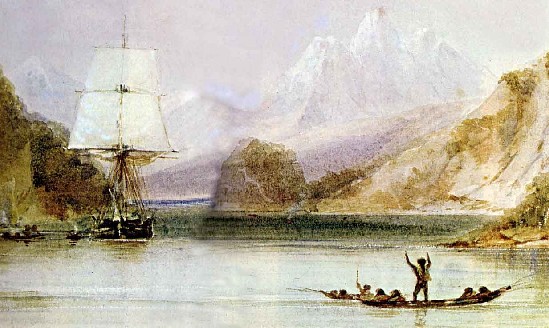
HMS Beagle Still serving scientific endeavour Conrad Martens (1831-1836)
By James Dacey
No respectable landlubber believed them about the giant squids before they started to wash up on the shores. We needed physicists to create mathematical models of freak wave formation before we believed that this spectacular phenomenon could occur.
So surely, when it comes to collecting empirical data for the scientific analysis of climate, there’s no way that scientists would rely solely on the word of mariners.
Well, a new collaboration in the UK has more faith than this. Historical naval logbooks are about to be used for the first time in climate research courtesy of a partnership involving the Met Office Hadley Centre and the University of Sunderland.
The UK Colonial Registers and Royal Navy Logbooks (CORRAL) project has digitized nearly 300 ships’ logbooks dating back to the 1760s. Records include the logbooks of some famous voyages such as the Beagle, Cook’s HMS Discovery and Parry’s polar expedition in HMS Hecla.
According to the project’s leaders, the mariners aboard these ships kept surprisingly detailed notes of the daily, and sometimes hourly, climate conditions. “What happens in the oceans controls what happens in the atmosphere – so we absolutely need to comprehend the oceans to understand future weather conditions,” said the research team’s leader, Dennis Wheeler of the University of Sunderland.
International waters
It’s not just the British who have recognized the high seas as an under-explored resource for climate data. Another group, in Germany, have just developed a new mobile measuring station for observing the interactions between the oceans and the atmosphere.
OCEANET-Atmosphere can apparently register several atmospheric parameters every second, such as the amount of cloud water, the cloud type and the energy exchange between the ocean and the atmosphere. It also maps the atmospheric dust up to a height of 20 km using LiDAR, a technique which combines lasers with GPS.
Next week, four scientists will take a prototype of their machine aboard the vessel Polarstern before setting sail from Bremerhaven, Germany. They will sail south, via Punta Arenas in Southern Chile, to the Antarctic.



